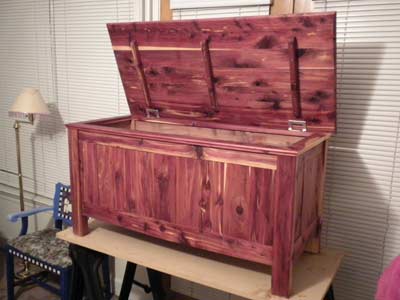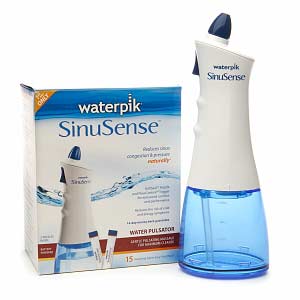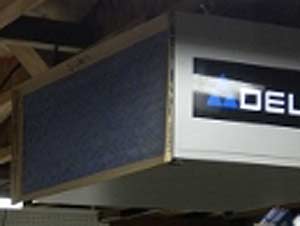Tips From Sticks-In-The-Mud Woodshop
by Jim Randolph
Long Beach, Mississippi
Click on any picture to see a larger version.
Welcome to "Tips From Sticks-In-The-Mud Woodshop." I am a hobbyist, not a professional, someone who loves woodworking, just like you do. I have found some better ways to accomplish tasks in the workshop and look forward to sharing those with you each month, as well as hearing your problem-solving ideas.
Tip #1
This month we celebrate the completion of the first year of "Tips From Sticks-In-The-Mud Woodshop." I'm going to go medical on you this month. In the several millennia man has been working in wood, much has been learned about the dangers of inhaled dust. In response, we do what we can with the funds that are available. Most of us start out with paper masks which fit poorly and allow air and dust to enter our noses and mouths around their edges. If we can afford it we upgrade to a better filter, maybe even the Trend AirShield Pro, recently reviewed by Steve Johnson
(click here to read the review)
, or its closest competitor, the 3M Versaflo that costs up to $1,200.00
(can you even afford to click here to read about it?)
.

|
|
An heirloom piece for nieta nurmero uno had better be perfect! This project was a lot of stress, as well as a health challenge.
|
A number of years ago I made a cedar hope chest for our eldest granddaughter (pictured above). For a full twelve months after that I made trip after trip to my otolaryngologist (ear-nose-throat doctor) trying to clear the cough I'd developed. All of my blood-related family suffers from nasal allergies and recurrent sinus infections, and I am no exception. I knew I needed better dust collection than the shop vacuums I had attached to each machine, but, OH! the money! I logged on to an online forum on dust collection and asked the participants which was more important to have: a ceiling-mounted air cleaner or cyclone. Every woodworker answered as if in unison: "whole-shop dust collection." Still, I just couldn't make myself part with the money, so I bought a ceiling mounted cleaner.

|
|
I bought this air filter in hopes that it would solve the problem of suspended dust particles in the air of my shop, but the machines were just pumping out far too much dust. The vacuum cleaners couldn't catch it all and this filter cannot clean all of the air in the entire shop.
|
I suppose the ceiling mounted cleaner helps. I know its multiple filters pick up a lot of dust and require frequent cleaning. Finally, I realized that there was still a lot of dust in the air, and that my online advisors were right: I needed whole-shop dust collection. I saved and saved and finally sprung. However, neither my air filter nor my much-loved Oneida Air Systems Pro 2000 is the star of this tip. About nine months after the Oneida, I purchased a Water Pik Sinusense:

|
|
As far as I am concerned, the Water Pik Sinusense battery-operated nasal irrigator has everything going for it that leaves netipots and neti bottles lacking. It's so easy and quick to use that, on the days you need to irrigate 3 to 4 times, you won't mind.
|
Think "neti pot" with a motor for propulsion and pulsation. With my genetic predisposition to nasal allergies I typically suffered at least one sinus infection every year, usually two. As a veterinarian, we advocate our
atopy patients
being bathed frequently to remove dust, pollen and molds that cling to their hair and stimulate their allergies. ENT doctors and allergists have long recommended sinus and nasal rinsing for the same reason. Man has a natural aversion to drowning, and that's what I pictured happening if I intentionally stuck a water hose inside my head and opened the spigot, that is until I was in the drug store one day and saw the Water Pik unit. I decided to try one and, boy, am I glad I did! As of this writing it has been years since I saw my ENT doctor. Your results may vary. I am religious about its use.
Following instructions included with the unit, I rinse every morning after showering, whether I want to or not. I make myself do it, even if I don't have time. I rinse after every session in the shop, regardless of whether my task has been dusty. I rinse every time I cut the grass, do any yard work or change the vacuum cleaner bag. If you aren't a fanatic about your Sinusense, you may not experience as much benefit. Know that you will not choke and you will not drown, despite my initial fears. The unit retails for less than $40 and includes extra tips and a small package of balanced salt solution you mix with distilled or sterile water. Dust is in the nature of the hobby/work we enjoy. Our bodies are trying to protect us from this dust, but we can help. A shower and change of clothing at the end of each workday helps, too. At the very least, wash your face and hands with soap and water to remove dust that clings electrostatically to your skin and work clothes. Doing this before bedtime not only makes your spouse happier, but will pay dividends as you aren't inhaling dust all night long. Benefit from the much-publicized cases of cerebral amoebiasis (
Naegleria fowleri
organisms from the water infecting its victims' brains) by following Water Pik's admonition to use only distilled water for your irrigation.
Tip #2
No Southern-fried Southern boy wants to be called a Yankee, but we share the characteristics of shrewdness and thrift. Thus, each month we include a money-saving tip. It's OK if you call me "cheap."
I won't take credit for this tip, even though I can't recall where I read it or whose original idea it was, but it's a dandy. Ceiling-mounted air cleaners usually have two filters: one pre-filter that's cleanable, and a pleated filter that must be thrown out when dirty. You can extend the life of both of these filters by fitting an appropriate-sized, standard HVAC filter to the front of your machine.

|
|
Cheap, cheap, cheap. For a single dollar bill you can add this filter to your existing air filter to enhance its filtration as well as make the expensive internal filters last longer.
|
It will prefilter your prefilter and make your expensive inside pleated filter last much longer, too. Periodically clean it with your shop vacuum. You don't even have to take it off the machine to vacuum it. Throw it away when it is hopelessly clogged or tattered.
...
I thought many Highland Woodworkers might enjoy this interesting and enlightening response I got to last month's tip
(click here to read it)
on using inexpensive, low-wattage CFLs to illuminate your shop when you're not working. Mickey wrote to say:
"Hello Jim, I am also a veterinarian and a woodworker. Also so tight I squeak when I walk. I was reading about your low level light system on the Highland site and thought I should share something I learned this year. I lost my entire shop and all tools to a fire. It has been a long year with no shop and lots to do to get back to where I was. The cause of the fire was never established, and it wasn't likely this cause, but in talking with the fire chief and the the fire investigators I was rather surprised to hear that they are responding to many fires started when the spiral fluorescents fail catastrophically.
They said it was the most common cause of fires they were seeing. I was shown a lamp that had burned through the base of the bulb as an example. I used a lot of the spiral fluorescents in my shop, but none were in the area where the fire started. The firemen worry about the poor quality control of imported bulbs and are quick to look for them in fire investigations.
That said, my fire paranoia is extreme at this point, and I think leaving small fluorescents burning all the time would not be a risk that I would be willing to take knowing this little problem. In the new shop I'm actually wired so I can shut off all power when I exit. I just put a flashlight by the door."
WOW! That's a scary story! I googled "CFL cause fire" and came up with this Snopes page
(click here to read what Snopes.com says)
, which supports the local firefighters' reports of defective-bulb fires, although it appears that some easily-combustible material might need to be near the dying bulb, such as paint thinner or rags. Still, like Mickey, an abundance of caution might be in order!
Jim Randolph is a veterinarian in Long Beach, Mississippi. His earlier careers as lawn mower, dairy farmer, automobile mechanic, microwave communications electronics instructor and journeyman carpenter all influence his approach to woodworking. His favorite projects are furniture built for his wife, Brenda, and for their children and grandchildren. His and Brenda's home, nicknamed Sticks-In-The-Mud, is built on pilings (sticks) near the wetlands (mud) on a bayou off Jourdan River. His shop is in the lower level of their home. Questions and comments on woodworking may be sent to
DrRandolph@MyPetsDoctor.com
. Questions about pet care should be directed to his blog on pet care,
www.MyPetsDoctor.com
. We regret that, because of high volume, not all inquiries can be answered personally.
Return to
Wood News
front page


